|
|
The end of the Second World War
did not mean the end of inconvenience and struggle for the civilian
population - in some ways things became even worse (see "When
Daddy came Home" by Barry Turner / Tony Rennell). In order to remain commercially competitive, Webbs had to keep up with the times and invest in new machinery. The original Peel oven was replaced by a "Travelling Oven" and the centenary edition of The Redditch Indicator (1959) gives a description of this oven, which reputedly cost £10,000 in the 1950s: (Ref 5) The article in The Redditch Commercial Directory (1935) is presumably describing the production methods before this innovation: (Ref 6) When sliced bread became fashionable (remember the saying "the best thing since sliced bread" ?) the shed at the end of the bakehouse was expanded to house the new slicer and wrapper. The bread was wrapped in a thick wax paper, with an impressive picture of Church Green - how we wished we'd kept a sample of something which was so commonplace at the time! Both new machines were prone to breaking down in the early hours of the morning, and John would be summoned from his bed to fix them. For this reason he had a phone at his home at a time when telephones were mostly only found in wealthy homes or in businesses. At that time phone numbers were usually only two digits (Webbs was 86) and over the years more numbers prefaced this to accommodate new subscribers. (for details of the history of the telephone service in Redditch, see Ref 9 ) At the time of writing, there will
still be those in Redditch who have fond memories of the bakehouse
in Peakman Street behind 20 Church Green East, extended partly
over Catharine's beloved garden. People would wait expectantly
for the Hot Cross buns on Good Friday, which were traditionally
only produced on that day. A member of the Coventry family remembers
buying a "milk loaf" from Webbs, which he and his friends
scooped out and filled with chips to sustain them as they watched
a film at the Select Cinema.
After the death of his brothers, Ernest Edward ("Ted") continued to run the business. The 1959 Centenary Edition of The Redditch Indicator reported that he still controlled affairs, attending the office every day at the age of 83. His sons recalled that he required a Hovis loaf to be placed on his desk every morning for his approval. He died the following year, confident that the family firm would continue. The era of the local baker came to an end when mass-produced sliced bread was sold in bulk by the supermarkets (although there has recently been a revival in interest in "home baked" style bread from smaller outlets). The demand for a wide variety of flour also declined, as did the need for home delivery when more families owned cars. It became a rarity to see the baker with his large wicker basket on the doorstep offering the choice of "tin" or "cob", or trying to tempt the housewife with a cake as a family treat. Fewer women were at home waiting for deliveries by the grocer, butcher, "pop man" (beer and mineral water supplier) or coal merchant. The "weekly order" had become the weekly trip to the supermarket. The sale of agricultural seed and
animal feeds had declined at the time when the bakery business
had been expanding and needed more space for machinery and equipment,
but as the bakery business itself declined, the sale of garden
seed, which had always been profitable, was able to develop further.
Some time in the 1950s, Webbs was able to lease premises
on the other side of Peakman Street (21 Church Green East)
to use as a Seed Shop. This building had probably housed
the first telephone exchange in Redditch. Surprisingly,
records from the early days of the telephone exchange give the
address as 20, not 21 Church Green East. See (Ref
9) for details of the early history of the telephone exchange
in Redditch.
Fortunately for Webbs, there was
a renewed interest in gardening, with TV programmes featuring
Percy Thrower and others.
Social trends put an end to even this successful enterprise. With the advent of garden centres, and garden products being sold by non-specialists, the time came to think of retirement. Various rooms were rented out as Webbs started to wind up the business, and "The Standard" took over the front offices for a time. John and Gordon retired in 1988, a full hundred years since William Webb had first leased the premises from the heirs of Ben Sarsons. Bullivant Enterprises took over the building and were able restore the interior of 20 Church Green East to its former elegance. The role the Webb family had played in the life of the town was acknowledged by naming it "Webb House" - a building that has witnessed the life of the town of Redditch since 1774, the decade in which William Webb had first arrived in Beoley. 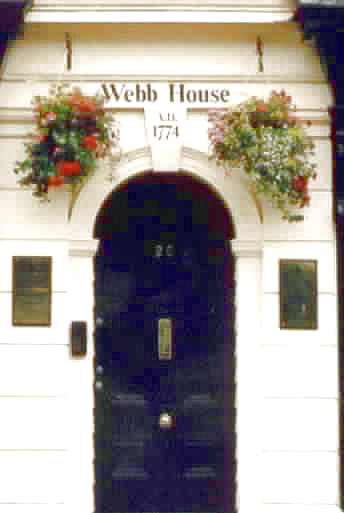 |
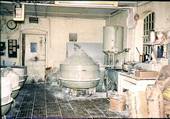
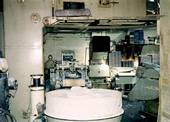
 Interior
of the bakehouse 1963
Interior
of the bakehouse 1963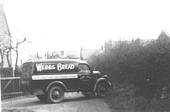
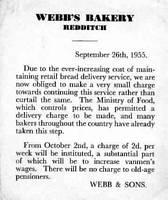
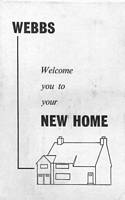
.jpg)
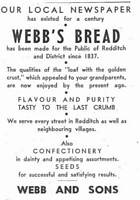 advert 1959 (Centenary Edition of The Redditch Indicator)
advert 1959 (Centenary Edition of The Redditch Indicator) the seedshop at 21 Church Green East (1960s)
the seedshop at 21 Church Green East (1960s)



